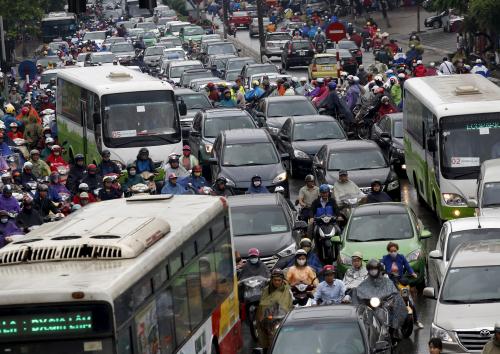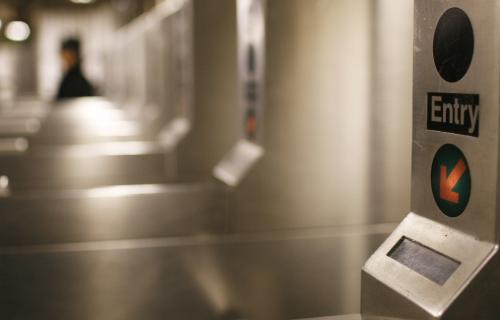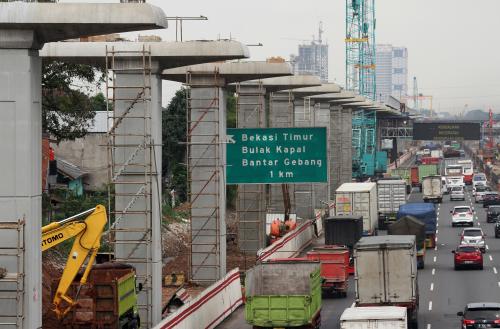 Drawing on examples from poor, rich, and middle income cities, this paper examines the importance, theoretical understanding, and empirical measurement of urban accessibility. We argue that accessibility is the main quantity to consider from an urban resource allocation standpoint, since it links land use and transportation, the two primary urban consumption goods. But despite the importance of accessibility, a sparsity of empirical knowledge and a disconnect between policymaking and accessibility outcomes have led many researchers to retreat into narrow areas of expertise—such as land use, housing, or transportation treated in isolation—and many urban policymakers to ignore accessibility altogether. Even when data are good, the politics of land use and transportation decisions rarely favor accessibility as an important policy outcome. As a result, urban policies often fail to allocate land use or transportation either efficiently or equitably.
Drawing on examples from poor, rich, and middle income cities, this paper examines the importance, theoretical understanding, and empirical measurement of urban accessibility. We argue that accessibility is the main quantity to consider from an urban resource allocation standpoint, since it links land use and transportation, the two primary urban consumption goods. But despite the importance of accessibility, a sparsity of empirical knowledge and a disconnect between policymaking and accessibility outcomes have led many researchers to retreat into narrow areas of expertise—such as land use, housing, or transportation treated in isolation—and many urban policymakers to ignore accessibility altogether. Even when data are good, the politics of land use and transportation decisions rarely favor accessibility as an important policy outcome. As a result, urban policies often fail to allocate land use or transportation either efficiently or equitably.
Throughout this paper we make two basic recommendations. The first is to put accessibility more squarely at the center of the study of urban development. The second is to focus urban policymaking more directly on specific problems, such as congestion, pollution, and traffic fatalities. Though there is certainly a need for better knowledge and practice, we argue for a modest change of course, rather than a radical shift in how cities are studied and managed. The externalities associated with transportation and urban development are subtle and interact with each other through many feedback mechanisms. Doing nothing to improve urban accessibility is not a desirable option, but doing something is hard. Nevertheless, we are hopeful that a better balance for research and a better balance for policy practice will bring urban research and practice closer together.
Our examination of the importance of accessibility, and understanding of it, and the measurement challenges proceeds as follows.
The time, cost, and effort of urban transportation and housing
Urban accessibility matters. In the United States, Latin America, and Europe, urban residents dedicate nearly half of their spending to housing and transportation. They also dedicate a substantial proportion of their waking hours to travel, particularly in large cities like New York and Mexico City. But while the general finding that households spend a large portion of income on housing and transportation holds in most places, including many poor parts of the world, aggregate figures hide considerable heterogeneity and systematic differences by age, gender, and city size in time spent traveling. In poorer cities, for example, the poorest households sometimes spend substantially less on housing and transportation, but they often do so by consuming extremely little housing and living on lands with uncertain legal title that are also vulnerable to natural disasters like flooding or mudslides. These poor residents are willing to pay an extremely high non-monetary price for accessibility.
Urban development and urban travel: the models meet the real world
The trade-off between housing and transportation costs is central to the earliest models of urban form in idealized cities and to the most recent integrated transportation and land use models of actual cities. Although both types of models provide useful frameworks for understanding development patterns and the potential effects of land use and transportation policies, there are numerous challenges to incorporating real-world complexities into these modeling frameworks. In particular, it is difficult to model accurately the simultaneous location of firms and households, the relative importance of different types of land uses in firm and household decisions, the variety of transportation options, the heterogeneity in firm and household preferences, the role of land use regulation, the effect of new infrastructure, or the legacy of older infrastructure and building forms. There may also be differences between developed and developing cities that vary in nature and not only in degree. Each additional element of real-world complexity adds more nuance to the models but obscures the nature of the trade-offs between transportation costs, housing, and other land uses.
Efforts to measure accessibility
Using this framework, measuring accessibility—which we define simply as the ease of reaching destinations—becomes conceptually as well as empirically challenging. At its simplest, a labor market measure of accessibility might count the total number of jobs accessible to a place or person within a fixed time and by a fixed mode under typical travel conditions. More complicated measures weigh accessibility indices by job type, time of day, and distance. However, at its heart, accessibility is an individual concept. To take an extreme example, proximity to a butcher shop does not factor into accessibility for vegetarian households. It is also a relative concept. People rarely go to the closest restaurant, attend the closest religious institution, or work at the closest job. While ad hoc measures of accessibility such as walk scores are fast becoming more available and may be informative, they still constitute deeply unsatisfactory measures. Yet more theoretically and empirically robust measures that incorporate multiple trip purposes, travel modes, and user preferences are still out of reach and unlikely to be commonly used anytime soon. Because accessibility is a hard concept that is often poorly understood and always poorly measured, it is an obvious obstacle to sound urban development policies. As a result, different people mean different things when they talk about accessibility and end up talking past each other.
Policy challenges and implications
Partially as a result of the challenges with the concept, accessibility plays little role in day-to-day investment or policy decisions. The complexity of defining and measuring accessibility makes it a difficult metric for assessing policy and makes it somewhat abstract and hardly pressing. Voters and policymakers have a much more personal connection to whether they have an easy time finding parking, whether housing is too expensive, and whether the trains come on time. Furthermore, different pieces of the accessibility puzzle resonate differently with different groups of people and individuals. While it is tempting to suggest that planning for accessibility requires a holistic approach that can accommodate this conceptual and empirical complexity, a holistic approach would likely backfire since it is difficult, perhaps impossible, to decide on an optimal accessibility level, let alone measure it. Instead, by looking at the examples of providing appropriate space for transportation, investing in transit, evaluating the transportation impacts of new land uses, providing affordable housing, and dealing with congestion, we argue that policymakers should consider whether policies, plans, investments, and regulations will tend to increase or decrease accessibility at the margin.






